Titanium vs. Stainless Steel Watches: Beyond the Silvery Surface
by Raman Kalra
Raman Kalra is the founder of The Watch Muse blog and has kindly agreed to share some of his articles with us here on Quill & Pad.
___________________________
The beauty of watches is in the eye of the beholder, and fortunately, they come in all different shapes, colors and sizes. However, there is more to watches than meets the eye. The type of case material used can make a significant difference in the overall quality and durability of the watch. In the past, selecting a case material was a simple decision based on budget, with options ranging from stainless steel to two-tone, gold, or platinum.
The real decision here was: how much do I want to spend, and is my preferred watch available in different case materials? Recent advancements in technology and consumer demand have resulted in a wider variety of materials being used in watches at more affordable prices. Suddenly, choosing the right case material is now nearly as important as selecting the dial color.

Omega Seamaster Professional in titanium (left) and steel
Titanium watches are nothing new: the first was released in 1970 by Citizen, yet you may have noticed an uptick in the number of new titanium watches being released over the last few years.
We are seeing more brands using titanium for their watches and more luxury options becoming available as alternatives to stainless steel. So what are the main differences between stainless steel and titanium watches?
Why are we starting to see more titanium watches? The price differential has narrowed between the two materials, but is a titanium watch worth the premium?
Stainless Steel
Stainless steel is the industry standard material due to its reliability, workability and pleasing aesthetics. It is no surprise that the majority of all watches have steel cases. However, it wasn’t always the case (no pun intended).
But what is stainless steel? Stainless steel was created in England in 1913 by accident. Harry Brearley attempted to improve the steel used in rifles and ended up with stainless steel, which was more colloquially known as “rustless” steel. Despite the discovery, watchmakers did not start using the material right away.
Until the 1930s, watches were typically produced using gold, silver or platinum. This changed with the Wall Street Crash in 1929 and the Great Depression. Demand for precious metal wristwatches suffered and a more affordable material was needed to reduce prices. This is where stainless steel entered the picture for watchmakers. It may have been the right choice, yet when it came to production, it was not a straightforward switch from precious metals to stainless steel. This mainly came down to the hardness of the metal.
Traditionally, watchmakers used hand tools and could shape and polish precious metal. Stainless steel was a different metal altogether. It was impossible to shape and create the necessary pieces using traditional methods by hand.
A different approach was required and ultimately, developed in Geneva using a variation of steel known as “Staybrite”. This steel had properties that gave it better cold workability and allowed for “drawing” – the process of forming metal by pressing it into a mold. Stainless steel watches were born.
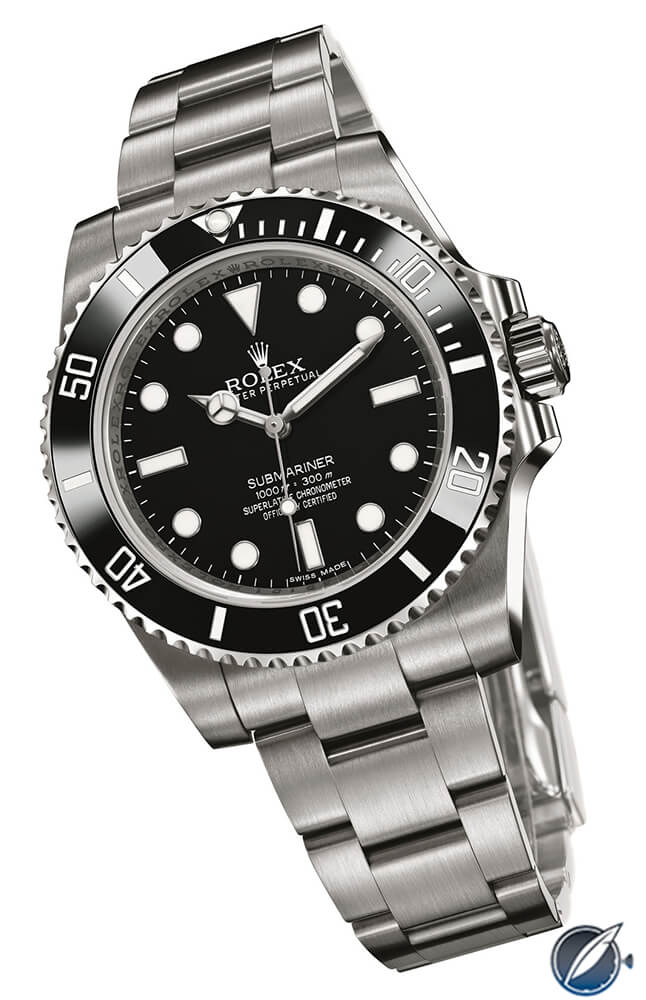
Rolex Submariner Reference 114060
Until the 1960s, stainless steel watches remained less popular than precious metals. Prices for the raw material may have been lower, but the cost of production remained high. Stainless steel was typically used on larger tool watches such as the Rolex Submariner, Breitling Navitimer and Omega Speedmaster as the material workability was still challenging. This new wave of watches did lead to increased popularity, but the 1970s saw stainless steel enter the realm of true luxury.
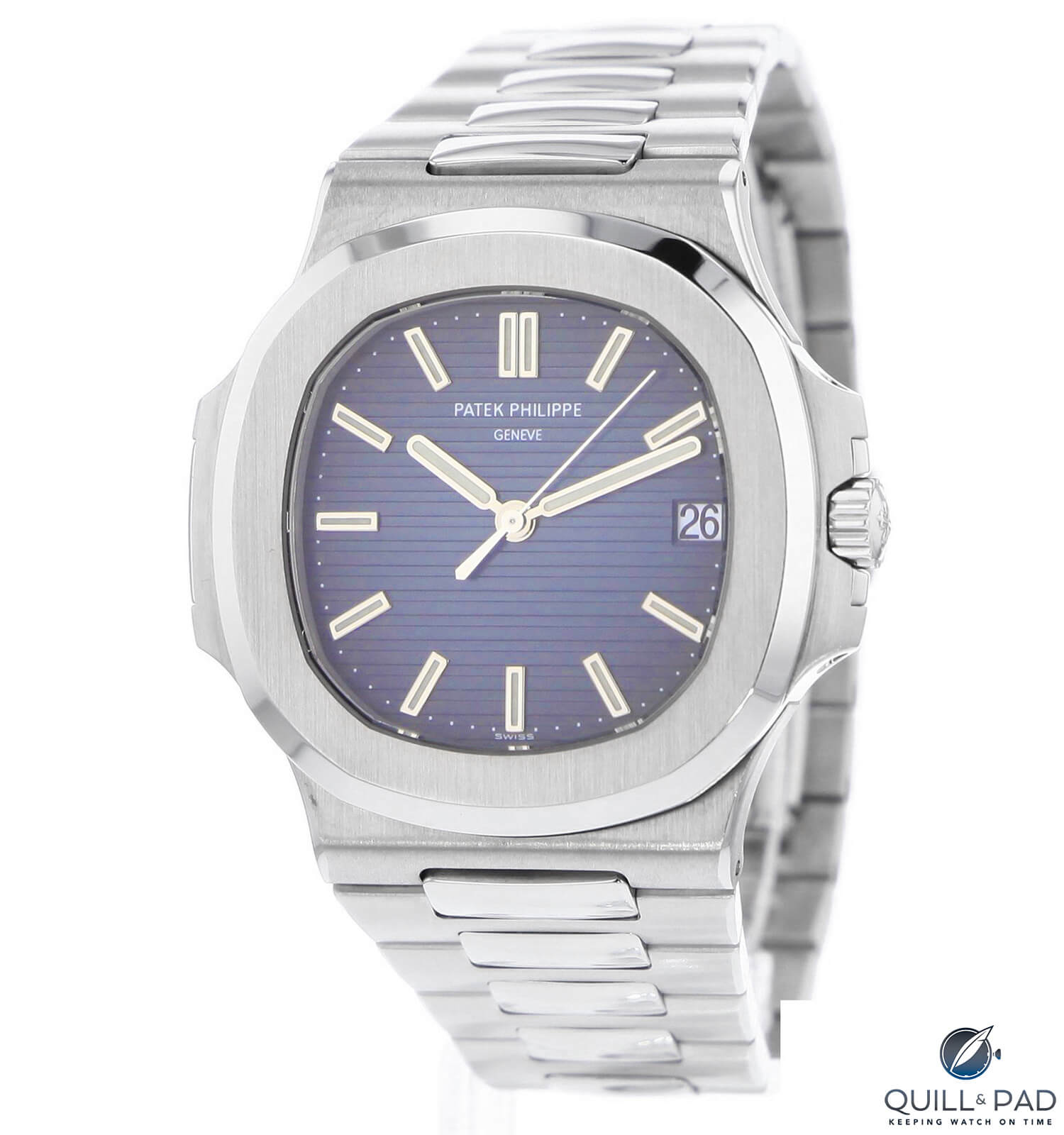
Patek Philippe Ref 5711-1A Nautilus in stainless steel from 2006
Of course, I am referring to what Audemars Piguet, IWC and Patek Philippe achieved with the help of Gerald Genta (among others during the decade). This marked a new era for stainless steel watches, proving that they could be both practical and luxurious. Jumping forward to the present, stainless steel is now the most prevalent case material among new watches by some margin. Beyond the surface, two main types of stainless steel are used – 316L and 904L.
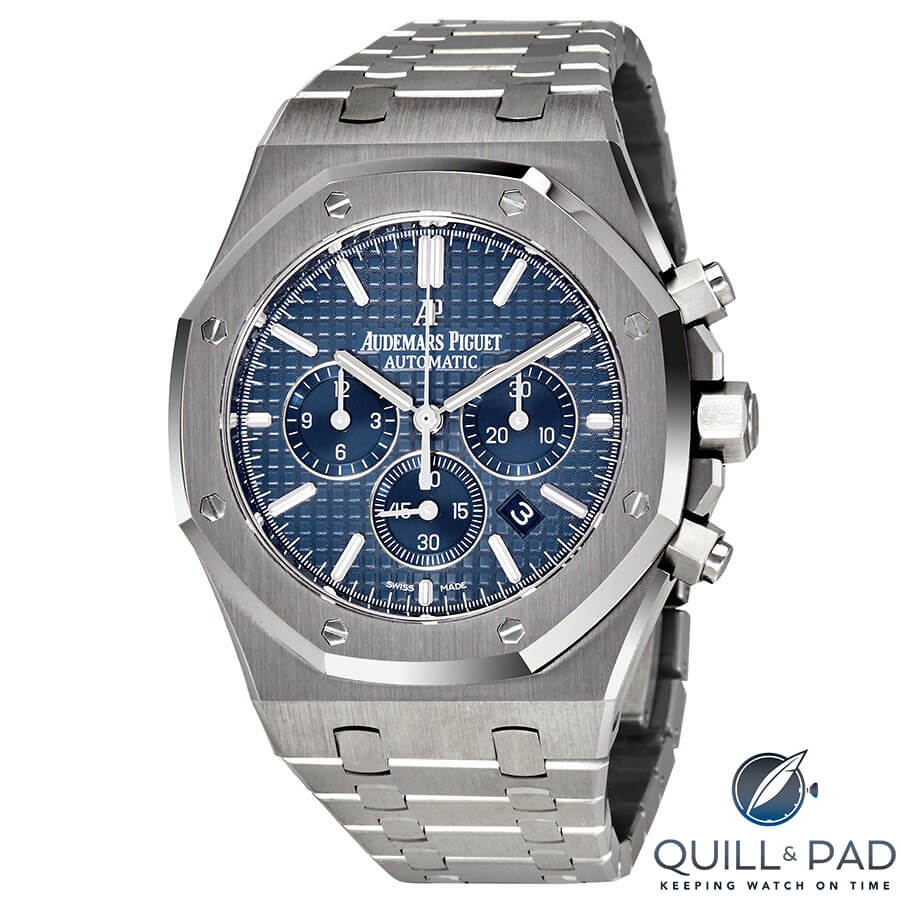
A steel classic: Audemars Piguet Royal Oak Chronograph
Stainless steel is a metal alloy mainly consisting of iron, carbon, and chromium. Even though the exact composition of each grade can vary, all stainless steel has at least 10.5% chromium, making it resistant to corrosion and staining. Both 316L and 904L belong to the Austenitic stainless steel group. They are characterized by high levels of chromium, nickel, and in some cases, molybdenum. Chromium is the most important element in stainless steel as the higher the concentration, the stronger the corrosion resistance. 316L is the first to consider here.
—————————————————————————————————–
—————————————————————————————————–
Aside from watches, the 316L alloy is found in surgical equipment as it is resistant to corrosion and acids (thanks to the addition of molybdenum) and in the food and pharmaceutical industry. Yes, I know what you are thinking – you have read “surgical steel” as a marketing tactical before. The “L” refers to its low carbon content giving it stability at higher temperatures and better corrosion resistance. The final key to its success is that 316L is non-magnetic. Given the properties to price ratio, it makes it an ideal material for watches.
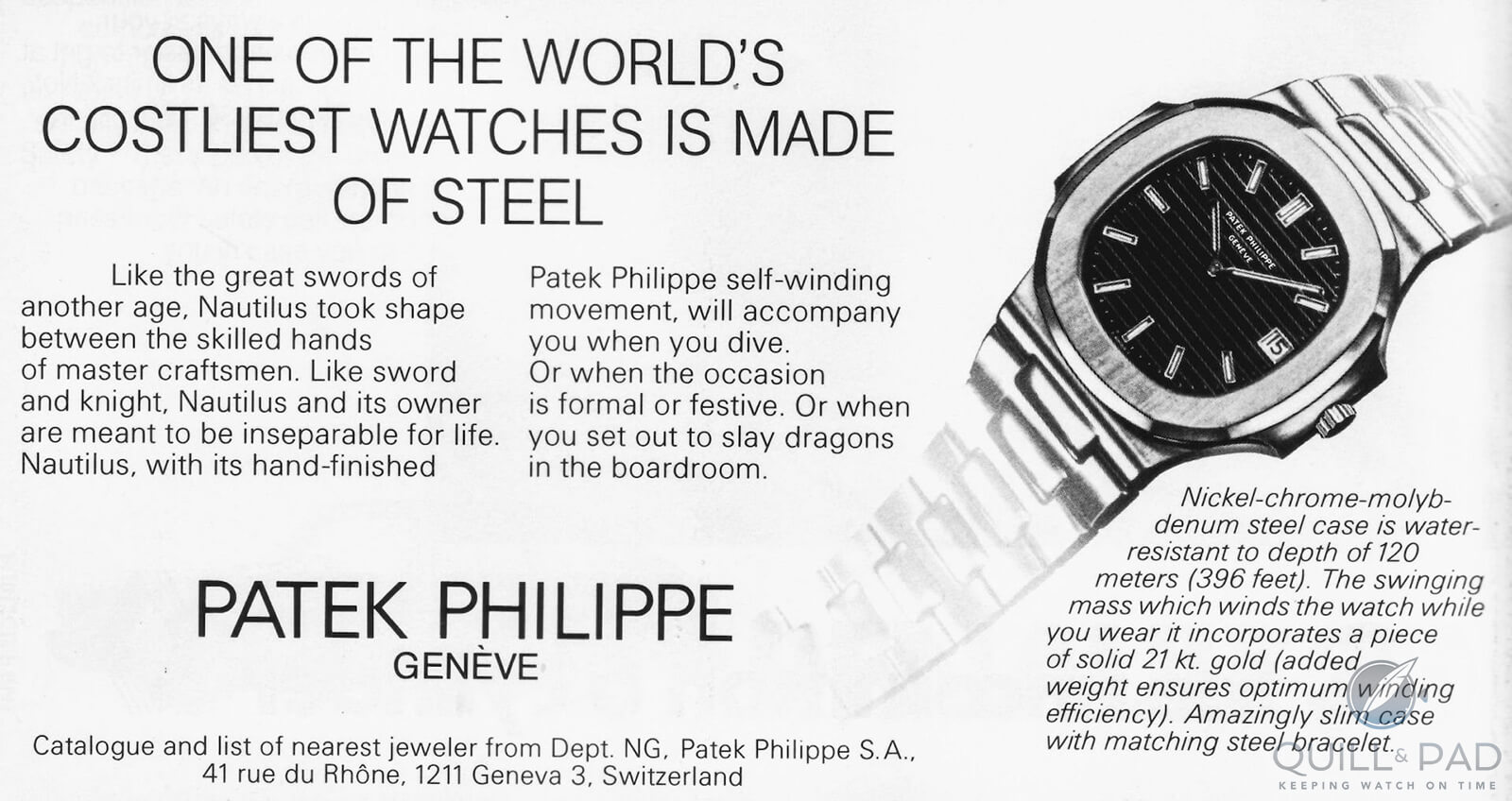
Vintage Nautilus in steel advert
904L stainless steel takes things one step further and this is the alloy that Rolex has used since 1985. It contains a higher concentration of chromium, molybdenum and nickel than 316L, and in addition, has copper, silicon and manganese. This all results in a more corrosion-resistant, durable material that can be polished to a higher level. According to Rolex, this was the only grade of stainless steel worthy of their standard.
This comes at a cost, especially as it is a harder material to work with, and requires specialized equipment to process it. The majority of watches are produced using the 316L grade as this is more than sufficient for luxury wristwatches. From my research, Audemars Piguet uses 316L for the Royal Oak, although there is a lack of information from the brand. You might question why then Rolex decides to go the extra step by using 904L.
This choice allows them to achieve a higher level of polish, resulting in a distinct shine on their cases and bracelets. Additionally, the lower carbon and higher chromium content of 904L steel give it a slightly cooler hue. Rolex began using this steel across their range in 2003, and if you compare a pre-2003 watch to a modern Rolex, you’ll see the difference.

Exercise in coherence: Rolex GMT Master II in stainless steel
Finally, this is more speculative, but it is great marketing! Rolex loves to tell us their standards are not matched, and by using 904L steel which is arguably excessive and naming it “Oystersteel”, makes a great selling point.
Titanium
This might be obvious but the biggest difference between titanium and stainless steel is that titanium is an element rather than an alloy. With that in mind, it could very easily be grouped into the category of precious metals alongside gold and platinum. When it is used for watchmaking purposes, other elements are incorporated, and this is what leads to the different grades of titanium used. There is a total of 38 recognized grades of titanium, but we will focus on the two grades of titanium primarily used in watches – grade 2 and grade 5 titanium.
Titanium was discovered in 1791 although it was only in 1932 that producing it from the raw ore ilmenite or rutile mineral became possible. Even then, there were no real use cases for the metal until the 1960s when the Soviet Union used it for military purposes, with the US following suit and introducing it to aviation. The defining properties of titanium are its high heat resistance and strength-to-weight ratio.
Titanium only found its way into watches in 1970 when Citizen launched the X8 model. This is quite a feat when you consider Seiko only launched its first titanium watch five years later, and it took Switzerland until 1980 to adopt the metal with the IWC Porsche Design Titan. It was then that titanium took off. More Swiss brands started to use titanium, allowing them to distinguish themselves amid the quartz crisis. Luckily, consumers embraced titanium as it was linked with NASA and space, which was a source of intrigue to everyone at the time.
Fast forward and we are seeing more watches appear in titanium. We will look at why this might be the case towards the bottom of the article, but for now, let us consider the two grades widely used. The first is known as grade 2. Grade 2 titanium is commercially pure, lightweight and has strong corrosion resistance. It is generally known as the standard of the industry and is found in the majority of more affordable luxury watches. That is not to say anything negative against it, but it is not technically as strong as grade 5. To mitigate this, in some cases, brands will treat the titanium with a scratch-proof coating but not in every instance.
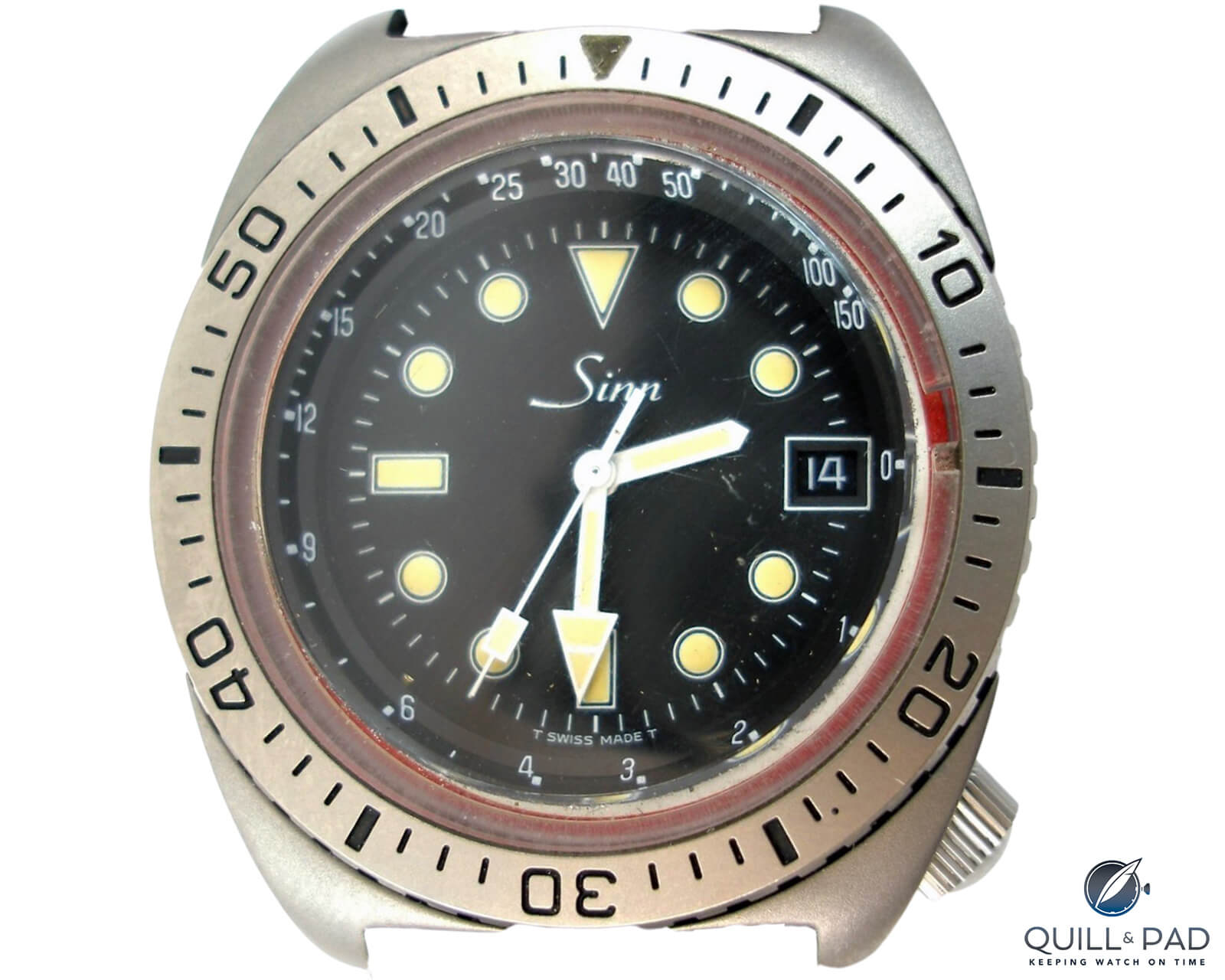
Sinn 8820 Titan
The most notable examples of this come from Citizen and Sinn. Sinn has its own Tegiment technology that makes its titanium watches, regardless of grade, close to fully scratch-proof. Grade 5 titanium, however, is an alloy (known as Ti 6Al-4V ) that features 6% aluminum and 4% vanadium. From these extra additions, the resulting product is stronger and has a higher resistance to scratches, heat and corrosion.
Notably, though, grade 5 titanium can be polished, and this can provide that extra sense of luxury. This is why we see grade 5 titanium used in more expensive pieces that can look similar to their stainless steel counterparts.
Stainless Steel vs. Titanium – The Properties
When considering the different grades of stainless steel and titanium, we only scratched the surface of their material properties and how they differ. There are some obvious ones such as titanium being lighter than stainless steel, but I want to take a closer look at the properties that will be noticeable to you as you consider your next watch purchase. There may be specific categories that I miss here, but the focus is on what will matter most to you owning a watch.
Appearance
I have said this before and I will say it again – purchasing a watch is an emotional decision. The reality is, where once mechanical watches were known mostly for being tools, today they are often considered a luxury.
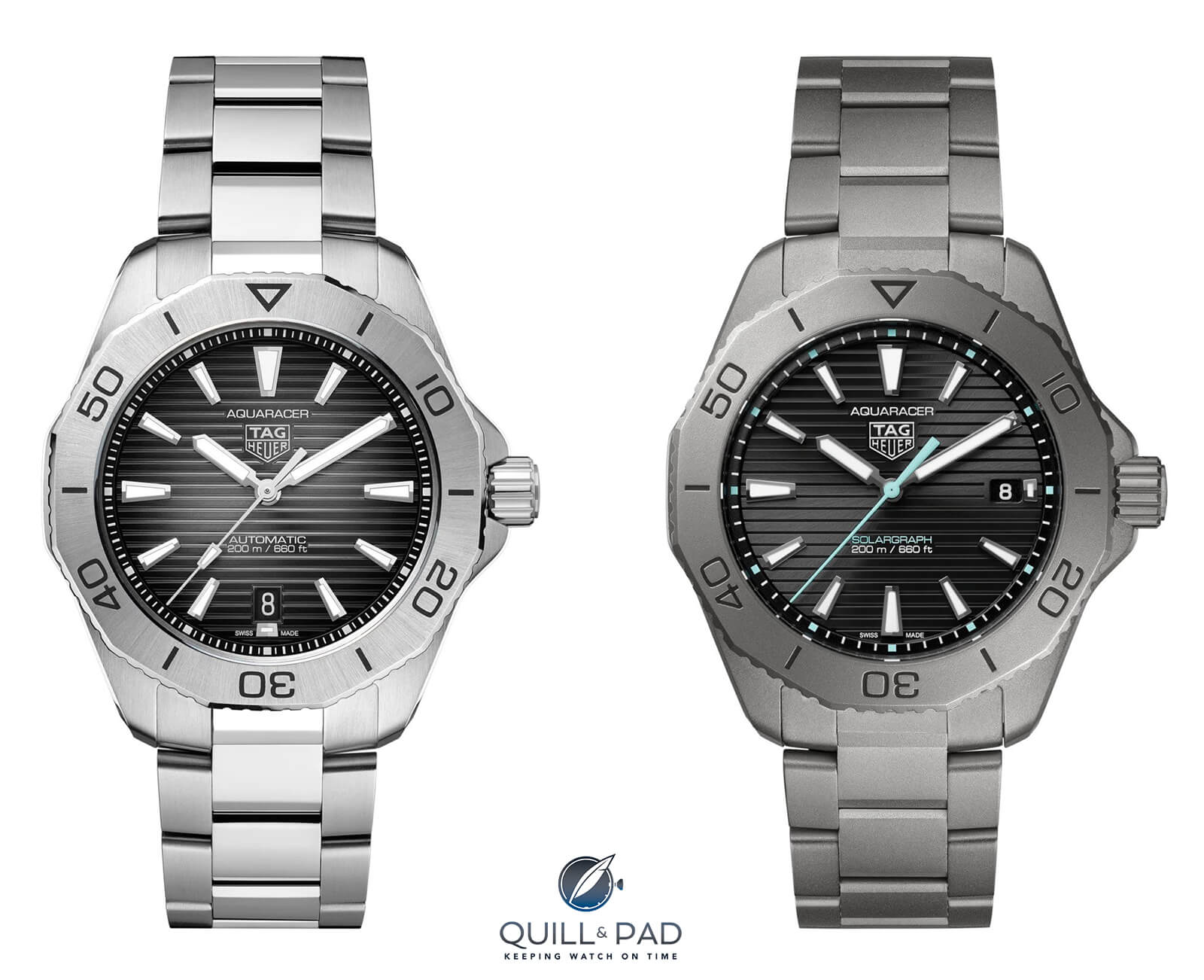
Tag Heuers in stainless steel (left) and titanium
This means appearance is an important consideration. The element titanium appears to be gray and can even be defined as a dull-looking silver. As a result, titanium watches tend to have a darker shade and those using grade 2 in particular are completely satin. This is down to the titanium forming an oxide layer when exposed to air. This layer creates a patina (similar to bronze and silver cases) that gives the watch a darker, matte finish.
Whether you like the darker shades of grey and the overall flatness comes down to personal preference, but this is one of the main reasons why we see titanium being typically used on sports watches. The overall aesthetic can be considered more purposeful than luxury and suits this type of watch more. Grade 5 titanium is slightly different. As mentioned above, grade 5 can be polished and that leads to different finishes.
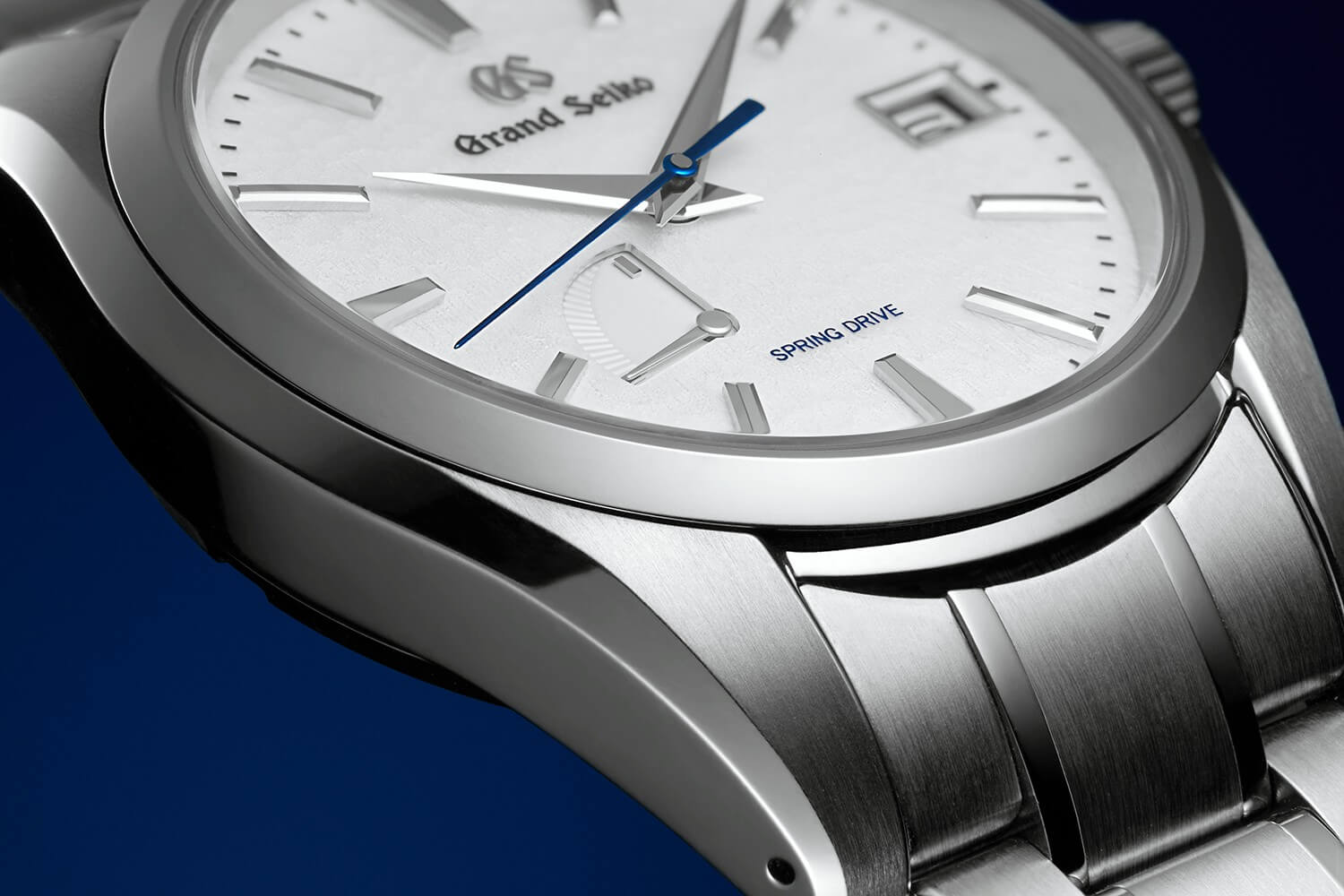
Grand Seiko Snowflake with Zaratsu polished titanium case
Grand Seiko is probably the best example to use here, although Grand Seiko uses their own High-Intensity Titanium, which is a harder-wearing version of grade 5. The titanium is Zaratsu polished and gives models such as the Seasons collection or Snowflake finishing that resembles stainless steel with the other material benefits (weight, corrosion and comfort) of titanium. Other examples such as the Laurent Ferrier Classic Origin Opaline demonstrate that, with the right titanium, tools and expertise, it can be used on more dressy pieces.
Away from color, the other aspect to consider is the long-term appearance of a titanium watch. The oxide layer may help give a titanium watch its aesthetic, but it does mean that scratches can be more noticeable. By scratching away the oxide layer, it reveals the slightly brighter metal underneath making marks more visible. The positive? The oxide layer does re-form thanks to its photocatalytic ability, and it has led to several brands labeling their watches as “self-healing” – spoiler, it is just the nature of the metal.
Otherwise, there are some like Citizen and Sinn as mentioned who coat their titanium to help give some added protection. Grade 5 is naturally more scratch resistant, and the difference compared to grade 2 is noticeable. The final point to make here is that by scratching a titanium watch, you are removing the oxide layer, but chances are, unless it is particularly deep, the metal itself won’t be damaged, especially on grade 5 as it is harder than stainless steel.
On the other hand, stainless steel scratches impact the alloy, but given the ability to polish with some ease, they can be taken out by a professional watchmaker during servicing.
—————————————————————————————————–
—————————————————————————————————–
Weight
Weight is the most commonly known difference between titanium and stainless steel – titanium watches weigh less thanks to their lower density. The density of grade 2 and 5 titanium is 4.5g/cm3 and 4.43g/cm3 respectively whereas 316L stainless steel is 7.99g/cm3. This is one of the main benefits of titanium and strength to weight ratio is the reason why we see it used in the aviation industry for example.
Depending on the watch, titanium watches can be anywhere between 30-50% lighter than a stainless steel version. Consider the Omega Planet Ocean: the full titanium, 43.5mm Planet Ocean on a bracelet weighs 140g whereas the stainless steel counterpart in 43.5mm is 216g. The weight of the titanium watch is 65% of the stainless steel. These measurements include all of the other details such as movement, indices and bezel, but it demonstrates the point.

De Bethune DB28 in titanium
When it comes to wearing a watch, a titanium watch can disappear on the wrist given the lightness. This goes against everything we are wired to think. Heavier is often associated with better quality, just consider the extra heft of gold or platinum. Yet with titanium, this is reversed. I have to say my personal preference is shifting towards wanting something lighter and more wearable in general. Whether this is something that appeals to you is personal preference.
Mechanical Properties
You may be wondering how the mechanical properties are worth considering and can affect your experience of watches, but they can. We have touched on the strength of titanium but putting it into context we will consider the tensile strength i.e., how much stress can a material go through before breaking. Stainless steel is 515MPa whereas grade 5 titanium is 1170MPa (MPa denotes the unit megapascal which is a unit of pressure).
Grade 5 titanium is also harder with a score of 349HV on the Vickers scale compared to 316L stainless steel at 152HV. Grade 2 has a Vickers hardness of 145HV meaning it is the same as 316L steel and explains why some brands look to coat their titanium to improve the surface hardness. This highlights why surface scratches may be more visible on grade 2 titanium and grade 5 is much more resistant.
One of the most underrated aspects of titanium, however, is its high heat transfer efficiency. This is notable as it means titanium watches tend to remain roughly one temperature. The watch does not get hot in the heat, nor does it feel cold in the morning when you put it on. It is a small, yet noticeable benefit that helps add to the overall comfort of the wrist when you are wearing a watch daily.
Once again, this is more noticeable with grade 5 titanium given its thermal conductivity. Grade 5 has a thermal conductivity of 6.7W/m-K compared to grade 2 titanium and 316L stainless steel at 16.4W/m-K and 14-15.9W/m-K respectively. But thermal conductivity isn’t the only factor to consider; heat capacity and density also play a role, and titanium is lower than stainless steel in both.
As a result, both grades of titanium tend to not get either too hot or cold.
There are other advantages of titanium such as its high corrosion resistance, meaning that the watch will not react in seawater and swimming pools (as well as to acids but hopefully that is not a regular occurrence for anyone.)
The final point to make here is that titanium is hypoallergenic. Titanium does not contain nickel unlike stainless steel and those with nickel allergies can have a reaction to 316L for example.
Beyond titanium not containing nickel, the outer oxide layer that forms does not react with skin providing an extra level of protection. Thankfully, this is not something I experience, but it is worth highlighting for those that might. Putting together all these small benefits, it is easy to see why watchmakers adopted titanium as a viable material to use for watches.
Price
There are pros and cons of both titanium and stainless steel. The one final factor we have yet to consider though is price. We are starting to see more titanium watches come up at price points that overlap with stainless steel watches. However, if we look at the same watch in two different materials, titanium is still more expensive. Using the same Omega Planet Ocean example, the titanium time-only on the bracelet is £8,500 compared to the stainless steel variant at £6,500 (correct as of April 2023).
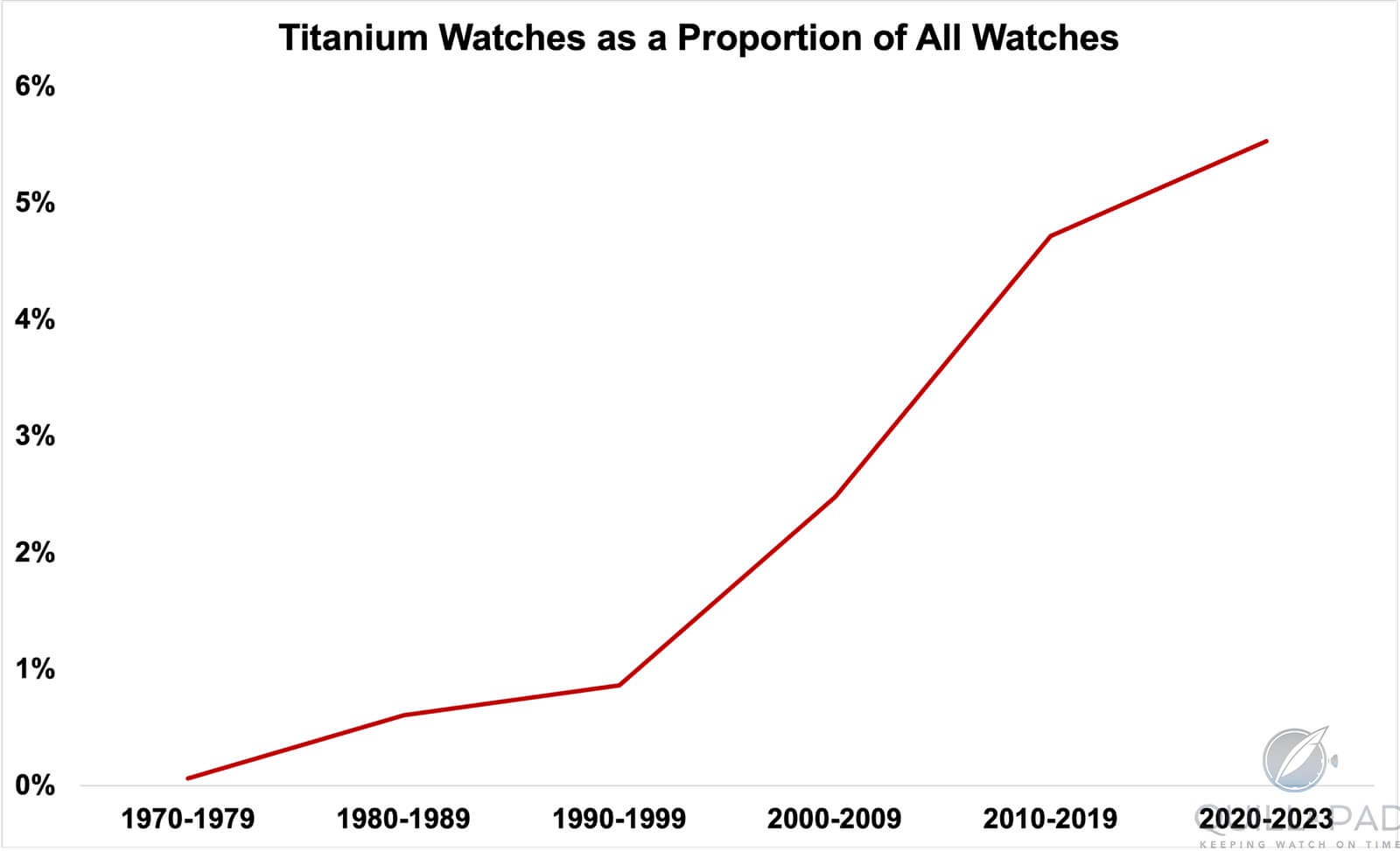
Percentage of titanium cased watches sold
We could just consider the raw material cost, but the reality is both stainless steel and titanium are not that high when compared next to the retail price of luxury watches. The majority of the cost of watches comes from development and production, whether it be manufacturing, assembly, or finishing and machinery costs.
Titanium falls victim to this. Working with titanium is challenging. The heat transfer efficiency means the surrounding areas heat up rather than the metal absorbing heat. Titanium doesn’t soften as it heats up whereas stainless steel does, so machinery needs to be appropriate to deal.
Finally, the finishing of titanium requires extra work given the hardness of the material – this should also be a consideration in long-term ownership as if you do badly scratch your watch, it will be more expensive to correct.
Production costs are also worth considering when you look at two models made from these materials. The number of watches produced by each should be taken into account. Typically, titanium watches will be produced in lower volumes (harder material to work with and fewer dial options for example) and to account for this, brands will need to charge more to meet their costs. How much is anyone’s guess, but just an extra consideration to take into account.
I conducted a quick analysis to see whether this price differential has changed in any way by comparing the retail prices for the Omega Planet Ocean from 2012 to April 2023. The price difference in 2012 for the stainless steel bracelet model compared to titanium was $2,400, while today is $2,100.
Similarly, the price between the Tudor Black Bay and Pelagos was €1,100 in 2012 and today €500 (I acknowledge the currency difference, but I had to rely on data readily available online). This is based on the Black Bay 41mm vs. Pelagos 42mm. There are several other pairs to test and this is just to gain a rough anecdotal picture.
There may be higher-end watches that have seen a different dynamic. But it seems as though there has been a slight compression between stainless steel and titanium variants, albeit a small one.
Why Are We Seeing More Titanium Watches Now?
If titanium watches are nothing new, then why does it feel like we are seeing more being released in the last 2 years? There have been titanium launches from Rolex, Tudor, A. Lange & Söhne, Audemars Piguet, IWC and Oris. Even microbrands like Baltic are even using titanium.
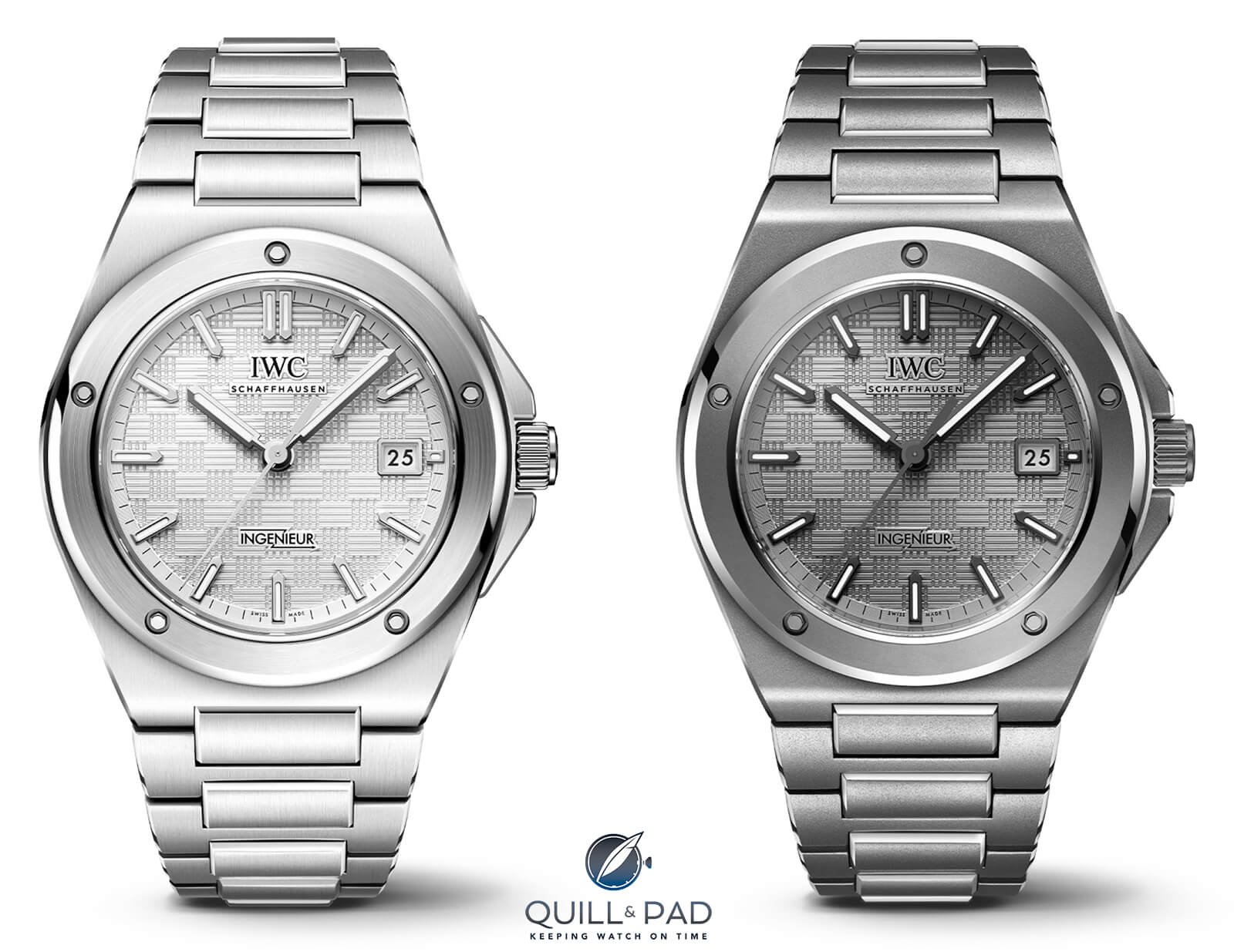
IWC Ingenieur in steel (left) and titanium
In my view, there are several factors contributing to the increasing popularity of titanium watches, including shifts in consumer preferences, brand investment, and diversification. In recent years, there has been a large influx of people who are now interested in watches. Social media has played a significant role by exposing more people to a wider variety of watches, as well as leading to a rise in luxury timepieces being seen as a status symbols. Additionally, secondary market prices for watches have led to more people considering them as a standalone asset class.
While well-known brands like Rolex and Audemars Piguet have seen the most significant uptick in demand, the broader consumer base for watches has led to an increase in demand for watches with unique features. Titanium gives you that. It offers a distinct aesthetic and level of individuality, similar to watches with colorful dials. To some degree, it is also another addition to the spec sheet.
Further, it feels as though the confidence to try the material has increased. With prices getting closer and a strong secondary market, more “risks” can be taken.
If you don’t like a watch you purchased, the market is deeper than ever to rectify that. From a brand’s perspective, if investments have been made into acquiring the necessary production equipment, it makes sense that they use it. Rolex is the prime example of this, having positioned itself to produce titanium watches and launching the Rolex Deepsea Challenge in 2022, followed by the titanium Rolex Yachtmaster I at Watches & Wonders 2023.
I believed it would take longer for us to see Rolex use titanium outside of the Deepsea Challenge, but having invested in the production line, it is not a surprise that they want to capitalize on it. Moreover, having the necessary equipment to work with titanium allows a brand to diversify its collection, whether it is to produce an exact aesthetic or build out current models to offer something “new” with relative ease.
I am not saying that this is anything particularly groundbreaking, but coupled with consumer demand being higher and faster (the demand for new products with shorter intervals), it can help explain why titanium is becoming more popular.
Conclusion
Watches made from different materials are nothing new, however, as we start to see a wider variety, deciding what case material you want on your next watch becomes more important. Titanium is one of the go-to materials for brands given its unique properties and longevity. Comparing it to stainless steel highlights several pros and cons, but many of them are down to your preference.
Are you looking for a lighter watch with a darker shade of grey that may scratch more easily but also “self-heal”? These are all questions that you will need to consider, particularly as titanium watches become more affordable and accessible.
I’m still torn between stainless steel and titanium. While I would love to own a titanium watch, ultimately, my decision will still come down to which model I prefer aesthetically…for now.
Let me know your thoughts and preferences in the comments below.
You can read more articles by Raman Kalra at www.thewatchmuse.com.
You might also enjoy:
Here’s Why: Stainless Steel Is The Most Precious Metal
6 Steel Sports Watch Options That Are Both (Relatively) Affordable And Definitely Obtainable
False Scarcity And Steel Sports Watches: A Collector’s View.
Leave a Reply
Want to join the discussion?Feel free to contribute!

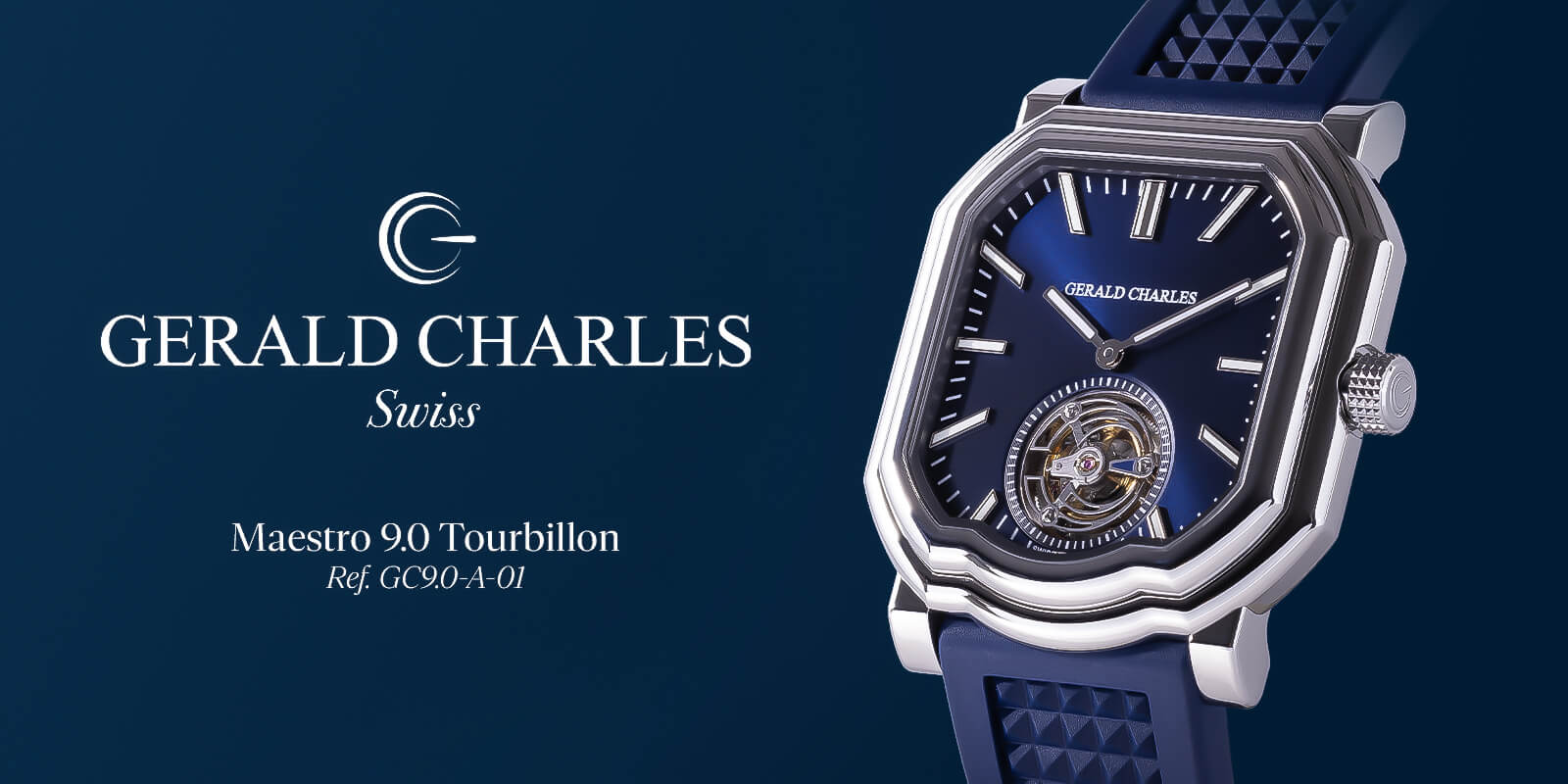
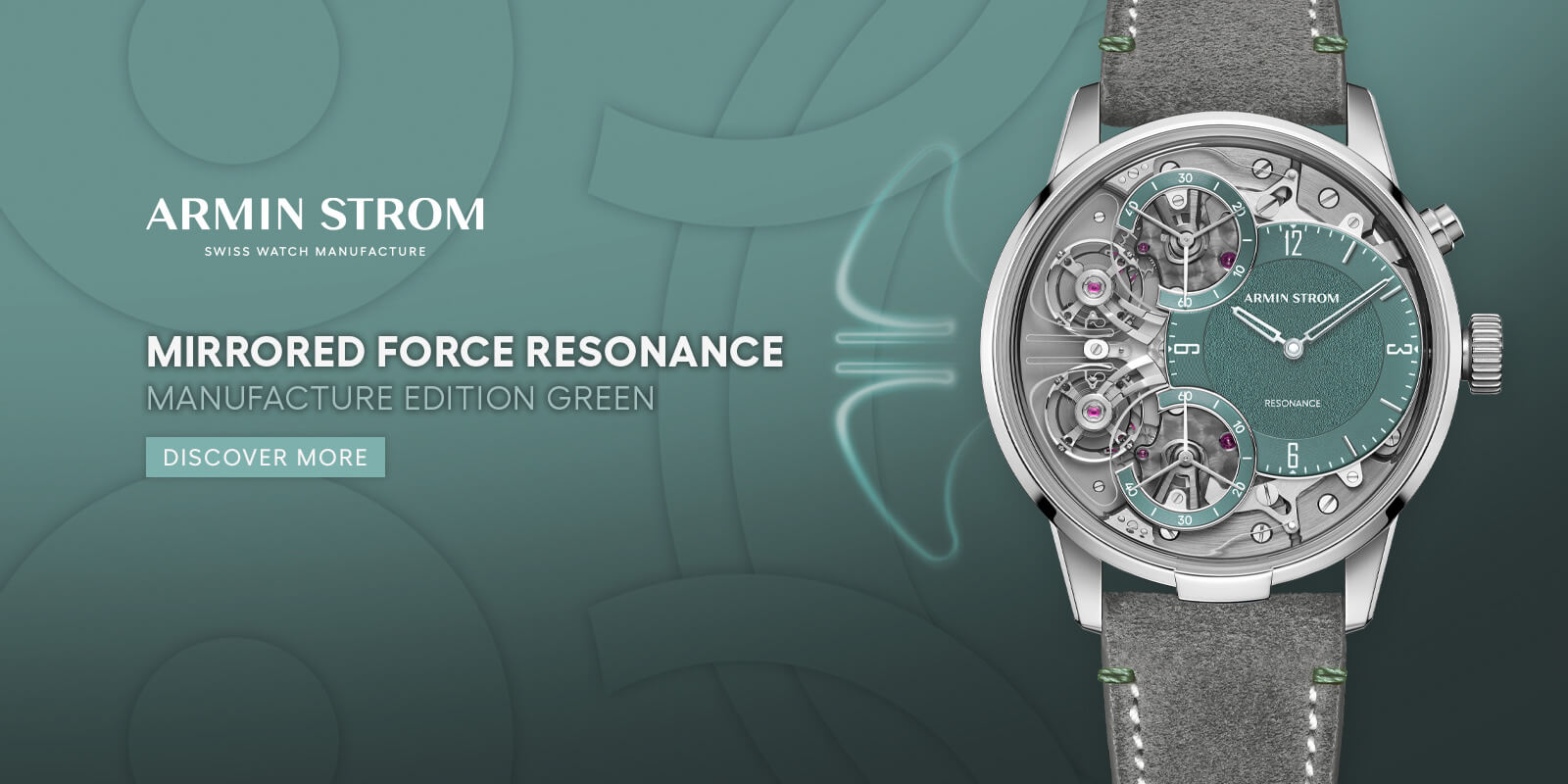
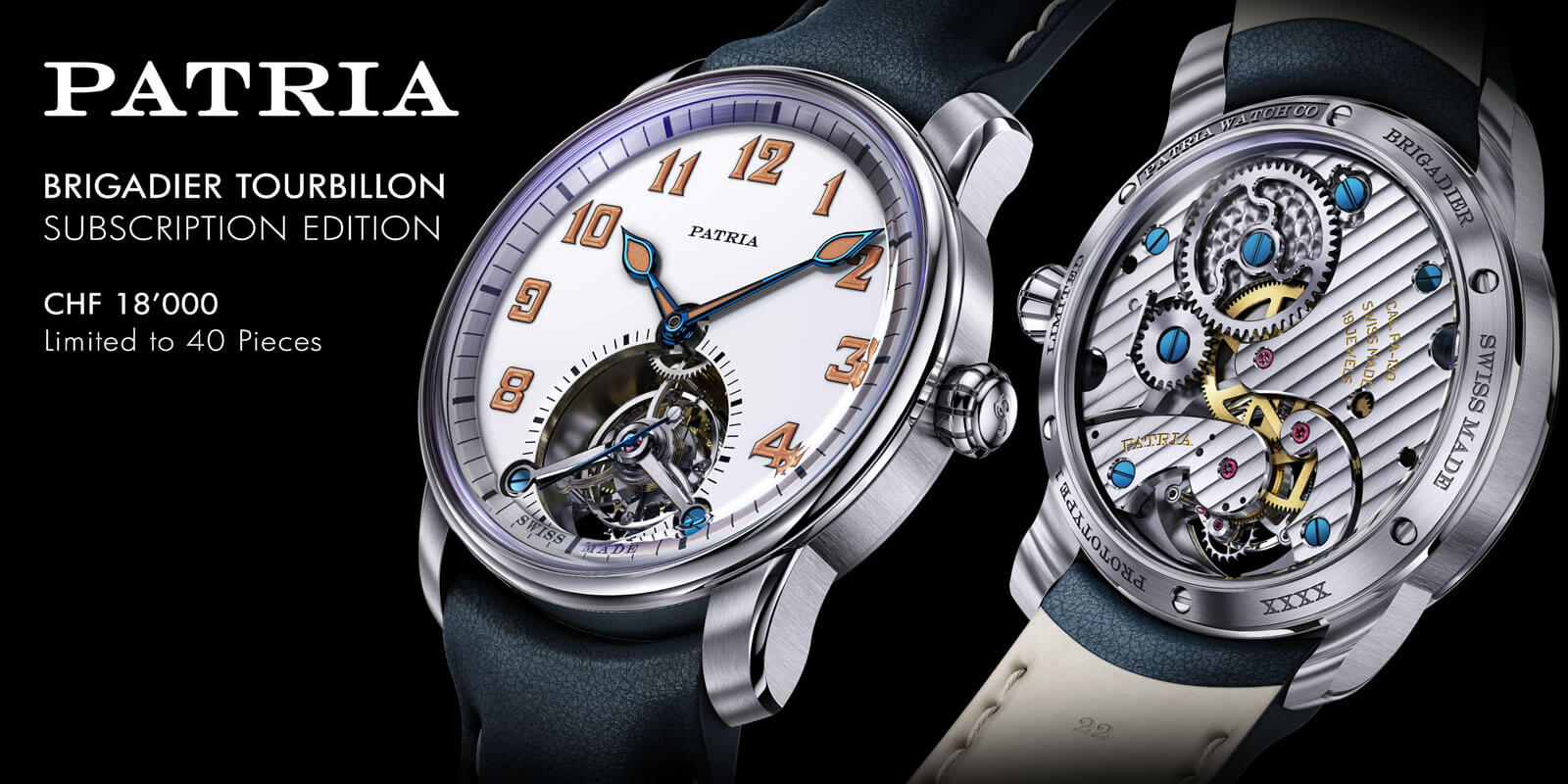


The GS image is not the snowflake. It is the Skyflake which is a steel case
I think it’s a Snowflake David, the Skyflake doesn’t have a power reserve indicator.
Regards, Ian
Ian, Respectfully, you are incorrect. I am wearing my SBGA 407 Skyflake exactly as shown in the image as I type this and it most certainly has the PR on the dial side per the photo. And it is steel, not titanium
The Skyflake case in the image is very different than the Snowflake SBGA 211.
The Skyflake is blue as in the photo, the Snowflake is white.
Finally the Skyflake comes on a leather strap standard per the image while the Snowflake is on a bracelet.
Frankly the photo caption is so wrong that your response is embarrassing, so you might want to delete your comment when you switch in the correct image. Raman, perhaps you could help Ian out as clearly GS is not his balliwick.
My mistake David and I apologize for my stupidity: sow=white, sky=blue.
I have replaced the photo with whet I now hope is now the correct image. Thank you for pointing that out.
Regards, Ian
p.s. and you are also correct with your perceptive observation that GS is not my balliwick.